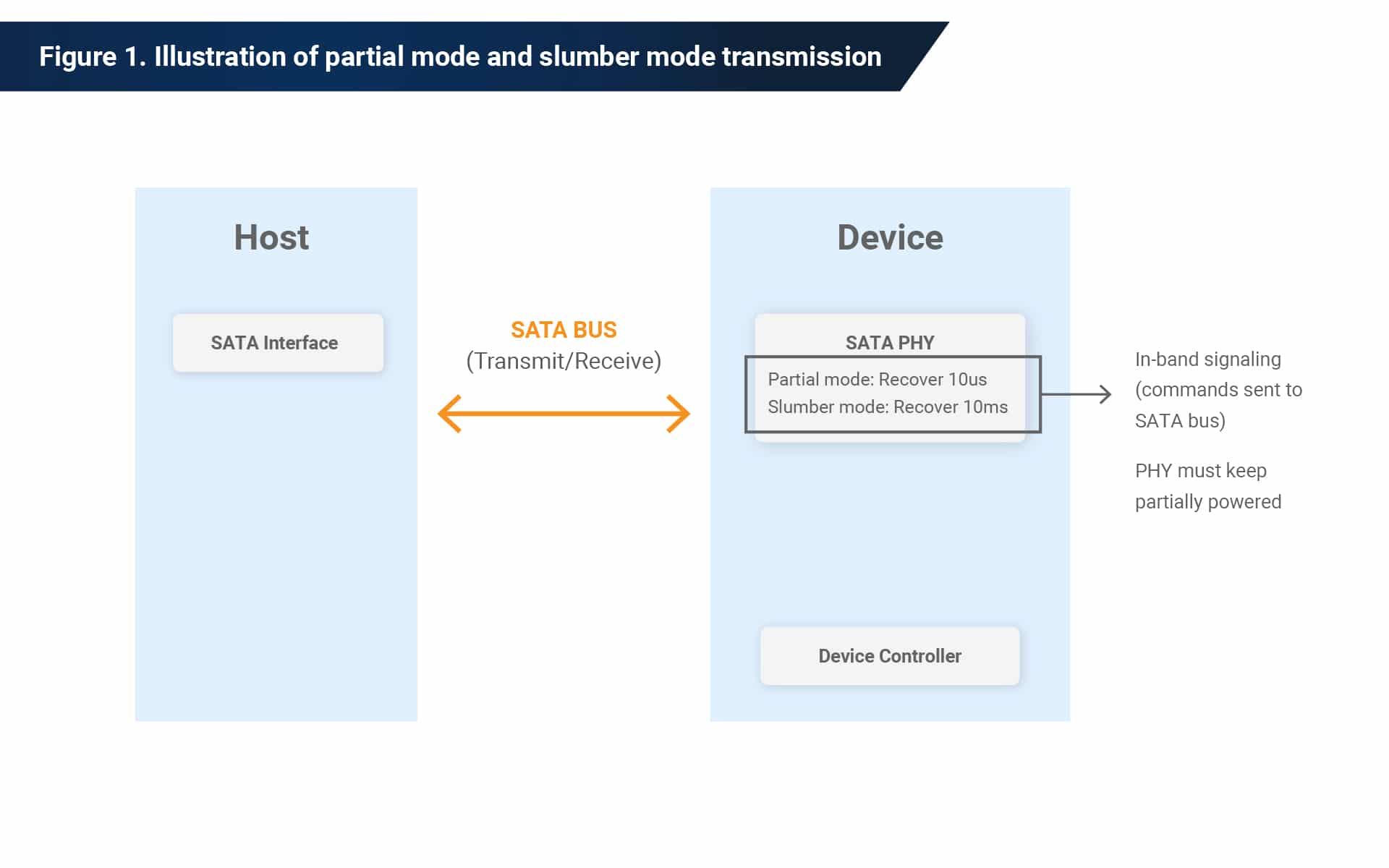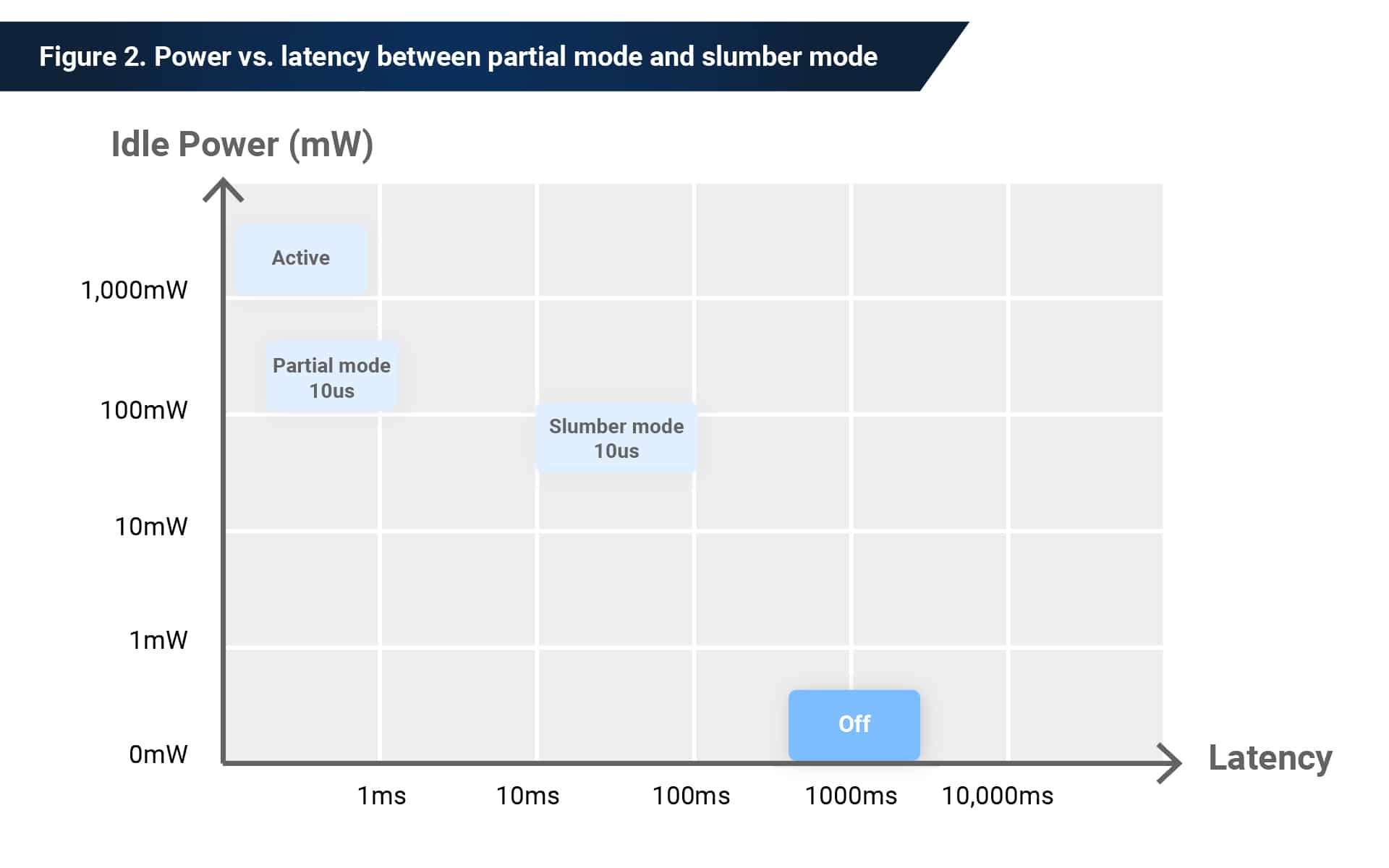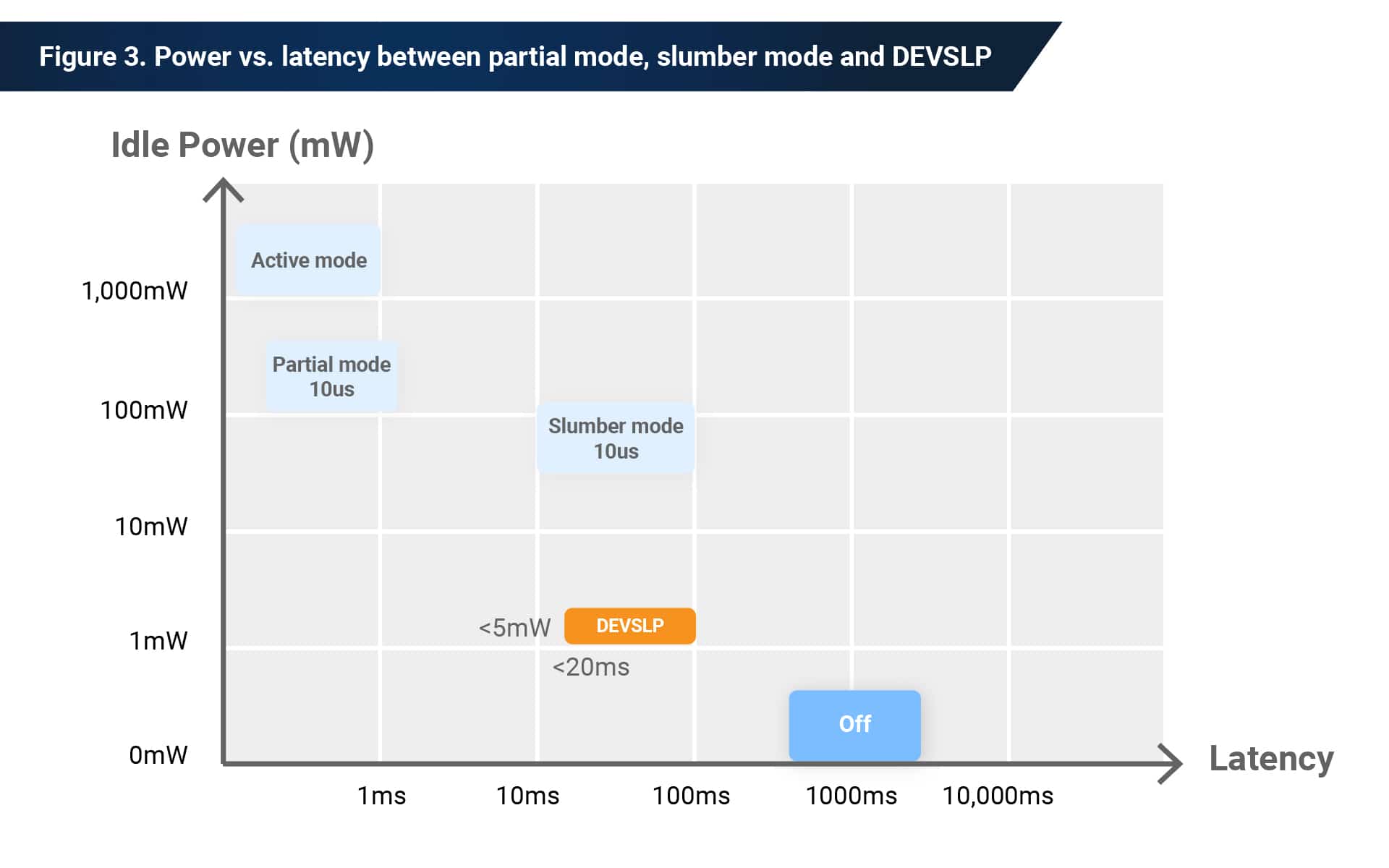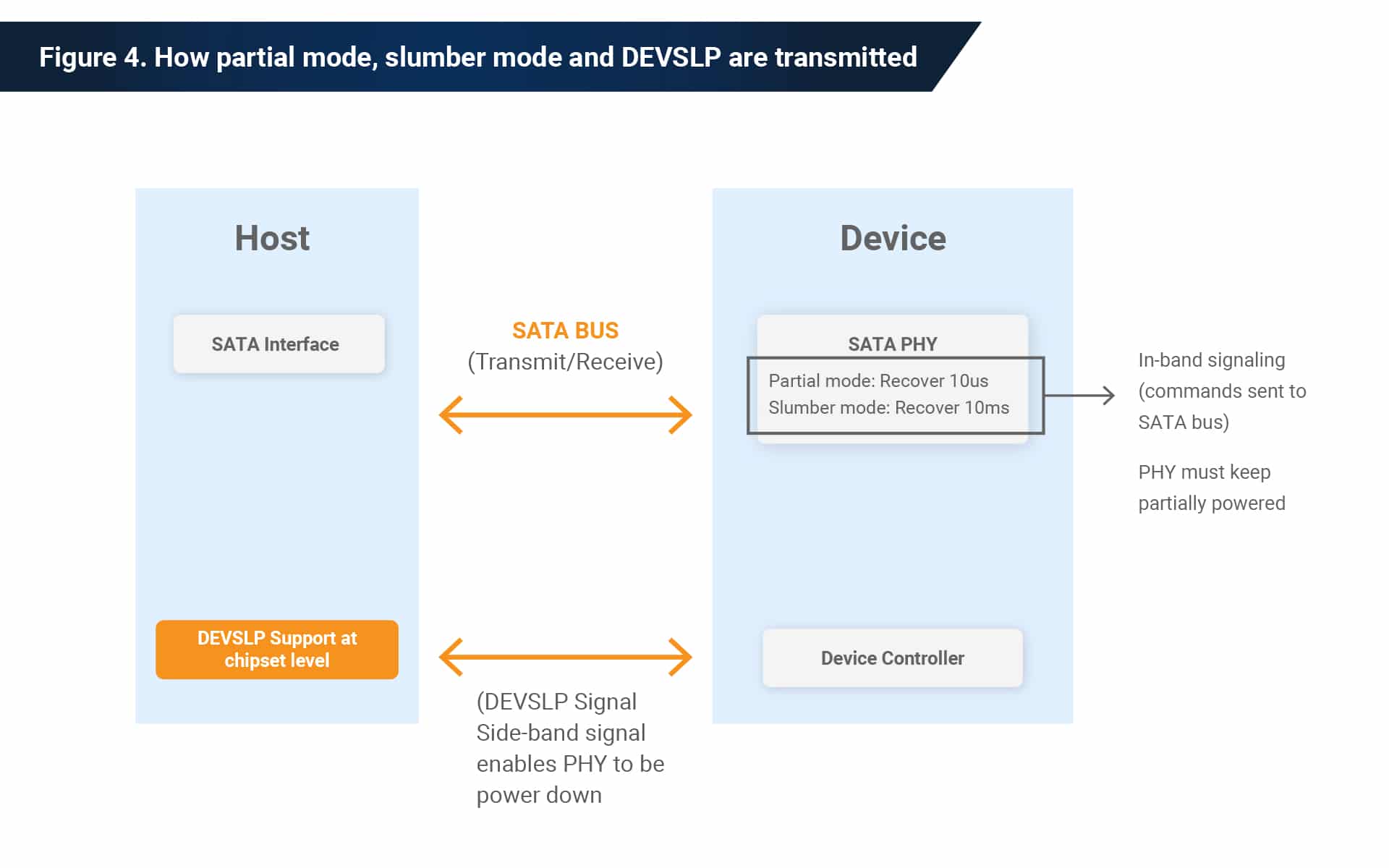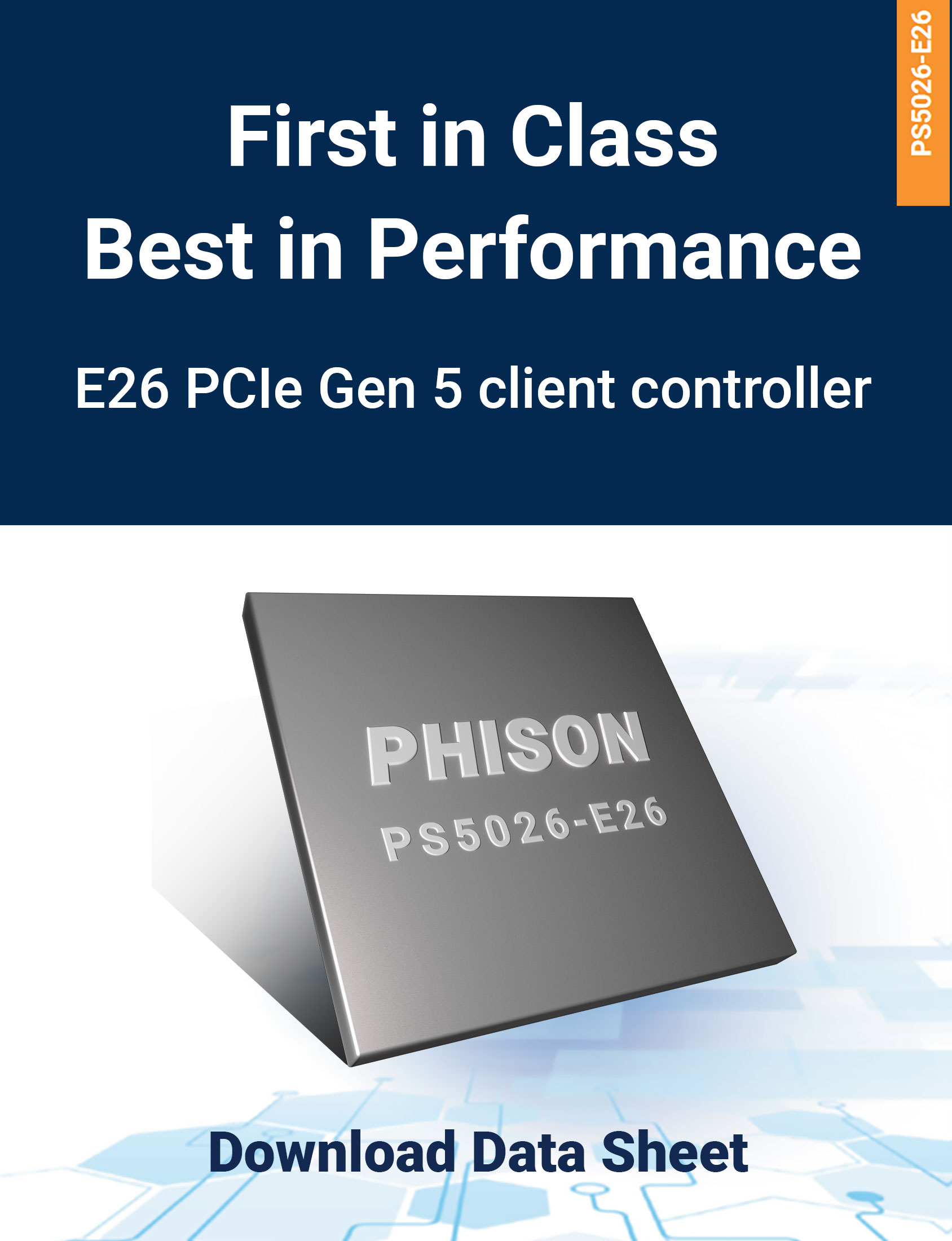The SSD has been gradually maturing in the storage world, and users have begun replacing HDDs with SSDs because of their higher performance, lower weight, smaller dimensions, and lower power consumption. And with the current semiconductor shortage and chip shortage, it’s more important than ever to choose carefully when purchasing SSDs.
One of the most important things to consider when purchasing SSDs is power consumption. In the SATA low-power mode world of SSDs, developers control power consumption and extend battery life through the use of three states: Partial, Slumber, and DEVSLP (DevSleep).
Partial and Slumber
SATA specifications allow a host or device to place the interface (PHY) into reduced power states.
1. Partial: PHY is a reduced power mode where the exit time is less than 10 microseconds.
2. Slumber: PHY is in a reduced power mode, lower than Partial mode, and where the exit time is less than ten milliseconds.
Hosts and devices use the “In-band” command to switch between different power states. A host (HIPM, Host Initiated Power Management) or device (DIPM, Device Initiated Power Management) can initiate both partial and slumber modes.
A SATA device cannot respond as quickly to host commands when a device is fully powered if the device is switching into a reduced interface power state. This is because there’s a tradeoff between latency power savings when using partial and slumber power states. The lower the power mode state entered, the more time it takes to resume.
DEVSLP
DEVSLP is a new power management mode available to use with hosts and devices. With DEVSLP, a host or device can completely power down their PHY and subsystems. However, latency is longer than partial and slumber modes.
With DEVSLP, a device can completely power down its PHY and other subsystems to help it meet existing latency requirements.
The importance of efficient power consumption
Efficient power consumption is essential to users since it determines how long battery life can be extended. In SATA SSD, partial, slumber, and DEVSLP are the critical tools used to manage device power consumption. With Phison’s innovative design and guaranteed supply chain, SSD power is managed efficiently to ensure extended battery life, making Phison SSDs the perfect solution in the market.
Frequently Asked Questions (FAQ) :
What are the practical differences between Partial, Slumber, and DEVSLP power modes in SATA SSDs?
Partial and Slumber reduce PHY power with minimal latency impact—Partial resumes in under 10µs, Slumber in under 10ms. DEVSLP powers down both PHY and subsystems entirely, providing maximum power savings at the cost of higher latency. These modes balance performance and energy efficiency based on usage patterns.
Is there a performance tradeoff when enabling deeper power modes like Slumber or DEVSLP?
Yes. The deeper the power mode, the longer it takes to wake the device. While Partial exits almost instantly, DEVSLP introduces noticeable latency upon resume. Institutions must weigh energy savings against performance requirements for each use case.
How does Phison’s approach to power management differ from other SSD vendors?
Phison combines controller-level firmware design and hardware co-optimization to intelligently manage power states with minimal impact on performance. This level of customization is engineered specifically for OEM and enterprise environments, such as labs or educational IT systems.
What benefits do Pascari Enterprise SATA SSDs offer for academic data centers?
Pascari SSDs from Phison reduce power draw in legacy servers while delivering consistent performance. This enables universities to modernize infrastructure affordably and sustainably without complete hardware overhauls.
How can higher education IT teams verify if their systems are using these SSD power modes effectively?
Power management tools in the operating system, along with SSD monitoring utilities from vendors like Phison, can track power state usage. Institutions should also audit BIOS settings and update firmware to ensure full compatibility with advanced modes.

